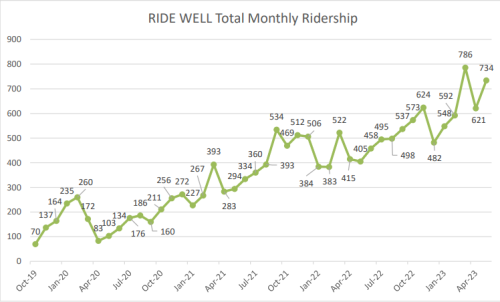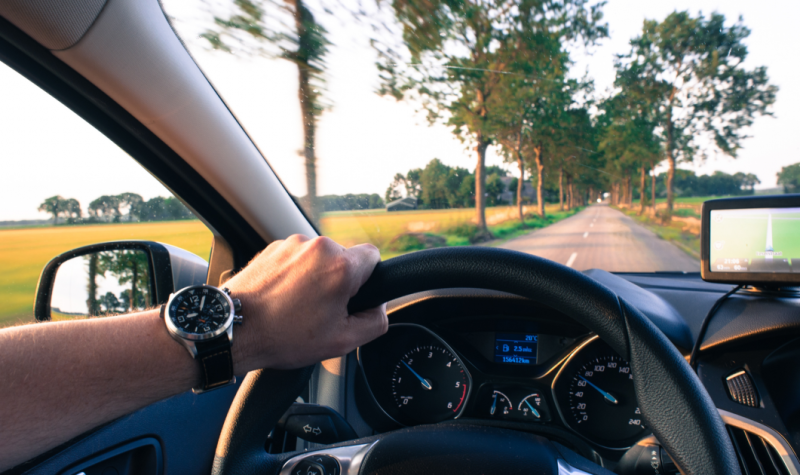During a period of peak popularity, Ride Well’s numbers have been skyrocketing and they are hoping to add more coverage.
The ridesharing service, operating similarly to Uber and Lyft but designed for rural areas with restricted access, has noticed the spike ever since COVID-19 pandemic restrictions began to loosen.
Manager of Economic Development in the County of Wellington Christina Mann says the project that began as a pilot four years ago only saw a high of 260 rides a month at that time. The monthly figure has launched up to as high as 786 this year, with the latest statistics from May seeing a total of 734.
The project is a provincially funded pilot until 2025, and offers "an alternative option to owning and using a personal vehicle in a rural setting and for those who cannot access vehicles for regular needs." It operates Monday-Friday in the county from 6 a.m. to 7 pm.

A line graph shows the upwards trend in rides. Graph from a County of Wellington report.
Mann believes there are other reasons besides the pandemic slowing down that have contributed to the boost in popularity.
"One of the things we know is more people know about the program. It started in 2019 and it takes a little while to spread the word," Mann said.
"People are using the service to connect to other transit options as well as the GO service to travel beyond the region," she explained.
In a county report, May logged three operating days where about 40% per cent of searches failed because demand was so high.

A chart breaking down the numbers surrounding the increase in interest. Graph from County of Wellington report.
Now, Mann says targeting high-volume hours with extra staff is on the agenda.
"At the moment we have usually two cars on the road in the morning and in the afternoon. We are suggesting to add eight vehicle hours per day, so that means one extra car on the road to cover some of the peak periods in the morning and the afternoon," Mann stated.
"The service is especially busy during eight to nine in the morning, and then again at two and three in the afternoon. Those are kind of our peak times," she added.
She explains Ride Well does project increased revenue, currently at 25 percent of revenue compared to the cost of operations.
Listen to the CICW story below:


